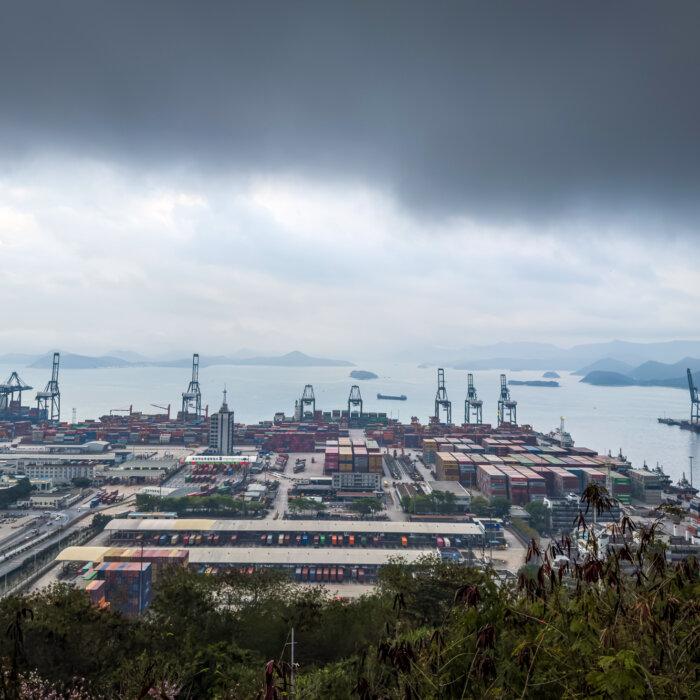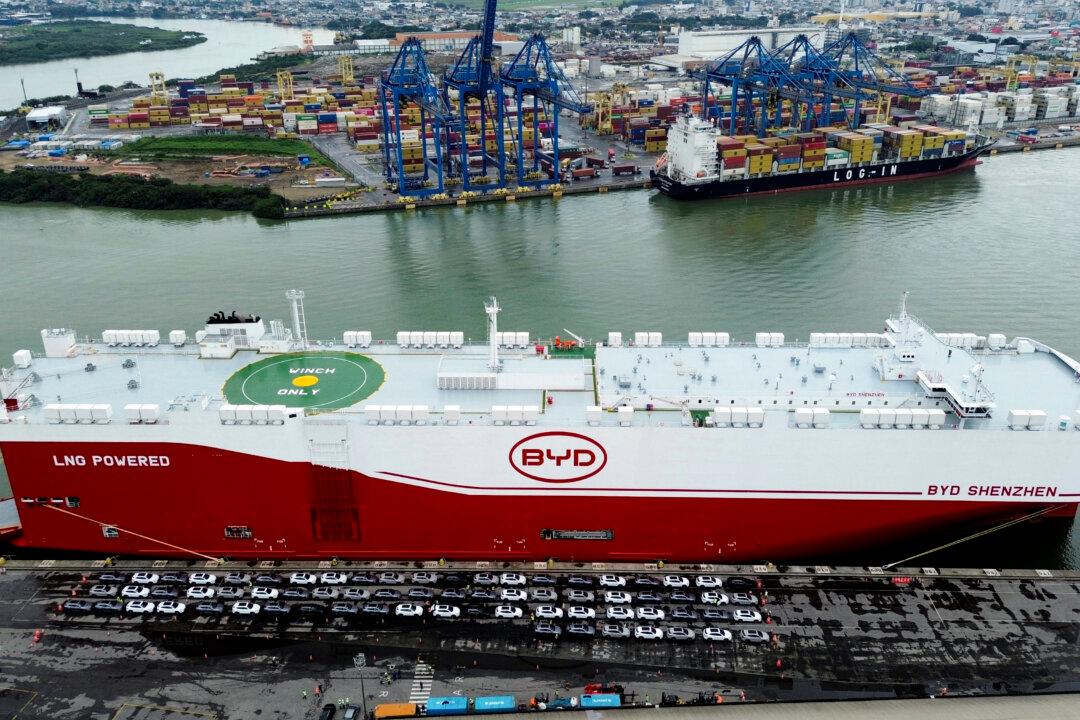The statement came as the two countries reached a truce in the tariff war after talks in Geneva on May 12. The 20 percent U.S. tariff imposed on Chinese goods linked to illicit fentanyl, however, hasn’t been lifted.
At the Chinese Foreign Ministry’s regular news conference on May 13, when asked about the fentanyl-related tariffs, Chinese Foreign Ministry spokesman Lin Jian said that “fentanyl is the U.S.’s problem, not China’s.”
He also accused the United States of imposing unreasonable tariffs on China over the fentanyl issue and demanded that the United States stop blaming China for the fentanyl crisis.
The United States and China reached a deal, reducing most of the tariffs put in place since April. However, the two countries did not reach an agreement on tariffs related to the fentanyl issue during the talks in Geneva, despite U.S. officials making the importance of combating the deadly substance clear to China.
Wang He, a U.S.-based China observer, told The Epoch Times on May 14 that the United States has a firm stance on the fentanyl issue, which has put great pressure on the ruling Chinese Communist Party (CCP).
“The temporary trade agreement was reached this time, but the 20 percent tariff linked to fentanyl has not been changed, which means that the United States requires the CCP take more substantive actions,” Wang said.
He said that on the one hand, the CCP does not seem to be willing to do anything about the fentanyl issue, as it’s part of the communist regime’s unrestricted warfare against the United States; and on the other hand, it is also very difficult to do.
“So, it had the Ministry of Foreign Affairs act very tough, while during the negotiations with the United States, CCP officials showed a tendency of cooperation. It wants to temporarily ease the situation by performing a double act,” Wang said.
Xu Zhen, a senior professional in China’s capital market, pointed out the logical fallacy in the CCP foreign ministry’s statement on May 14.
“If we follow the logic of the CCP’s statement, then, about the Opium War more than 100 years ago, the British could have responded with confidence like the CCP, saying that ‘Britain does not have an opium problem'. China’s opium crisis was not caused by Britain. Simply blaming Britain will not solve China’s own problems,” Xu told The Epoch Times.
Sun Kuo-hsiang, professor of international affairs and business at Nanhua University in Taiwan, told The Epoch Times on May 14: “The CCP’s claim that the fentanyl issue is an internal affair of the United States and has nothing to do with China is untenable.
“Although the fentanyl epidemic in the United States is an internal structural problem, China has long been the largest source of fentanyl and related chemicals in the supply chain. China itself has admitted that its companies may be involved in the fentanyl trade. In 2019, it cooperated with the [first] Trump administration to announce comprehensive control of fentanyl substances, which proves that China knows its responsibility.”
U.S. officials vowed in the Justice Department announcement to bring “the full force of justice to anyone who conspires to poison our communities with fentanyl.”
Sun said that exposing the actual role of Chinese companies in the fentanyl issue through judicial means shows that the United States has concrete evidence of China’s involvement.
“If China continues to evade responsibility, it will further lose credibility in the international community and in economic and trade talks,” he said. “The CCP is using cooperation on drugs as a bargaining chip in geopolitics, which will cause the West to put more scrutiny on it and accelerate the de-CCPization of the global supply chain.”
Sun said that fentanyl has played an important role as a strategic lever in the U.S.–China tariff war.

Four Scenarios for the U.S.–China Tariff War
As the U.S.–China tariff war has entered a new stage during the 90-day truce, Sun said that there are four possible scenarios in its future development.“The first scenario is a short-term fix and a long-term confrontation. In the short term, tariffs may be lowered, Boeing aircraft deliveries may be resumed, and some markets may be opened up, but the core differences cannot be resolved,” he said.
The second scenario, Sun said, is “an escalation of the full confrontation. If the negotiations break down within the 90-day truce, the United States will restart comprehensive tariffs and increase technological containment, and China will retaliate by banning U.S. companies or controlling the export of raw materials.”
The third scenario is “a limited compromise to restart the first phase of the agreement, that is, China is willing to make certain concessions, and the United States promises to stabilize its tariff policy, and both sides restore a certain stable structure,” he said.
The last scenario, Sun said, is that “multilateralism replaces bilateralism, and the United States turns to its allies to encircle China. That is, the United States strengthens cooperation with the European Union, Japan, South Korea, and the G7 to constrain the CCP with rules, while China turns to the so-called global South to seek buffer space.”
“The essence of the tariff war is institutional competition, not simple trade friction,” he said.
“The current situation between the United States and China is only a temporary easing of tensions and a superficial reconciliation, but the long-term trend will still be an economic cold war.”






